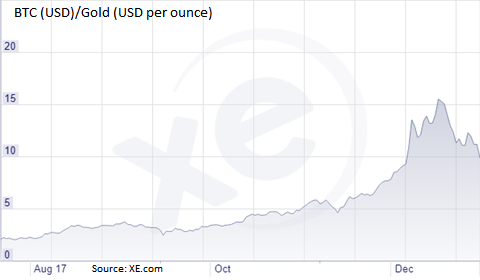Blockchain has leapt from obscure posts in tech blogs and discussion forums a few years ago to front-page articles in mainstream media.
Organizations have attempted to capitalize on its hype in interesting ways. Long Island Ice Tea Corp saw its share price soar by 500% intraday on 20 December 2017, when it changed its name to Long Blockchain Corp.

The New York-based iced tea and juice maker deftly timed its strategic shift to blockchain. Bitcoin, the first successful implementation of blockchain and digital currencies, saw its market capitalization soar by 1,400% since the beginning of the year.
To fully understand the key features of blockchain, we need to first de-construct the hype and dive into the nuts and bolts. What exactly is a blockchain? Most observers identify blockchain as the technology underpinning Bitcoin. The revolutionary cryptocurrency, touted as “digital gold”, was created by the mysterious Satoshi Nakamoto in January 2009. By January 2018, it grew to an all-time high price of USD 19,783, or worth 15 ounces of physical gold at the time.

Using blockchain to power cryptocurrencies is its first successful implementation. Let’s look at features that make blockchain great for digital money and possibly many more applications. In computer engineering terms, a blockchain is a cryptographically hashed linked list. Let’s break it down.
1. Blockchain as a data structure
A blockchain is a growing record of data, compiled as virtual blocks. In Bitcoin’s blockchain, the data being recorded is Bitcoin transactions. The structure starts with a single block, known as the genesis block. As the amount of data recorded on the system increases, more blocks keep getting added. Each block in the sequence is linked to the previous block, going all the way back to the genesis block. This “chain” of blocks is what gives this type of data structure its clever name.
It should be noted that similar linked list data structures have been studied and used in information technology for decades. Many word and photo processing applications create stacks of data linked sequentially, so a user can “undo” the most recent state and revert to the previous state.
However, the blockchain is typically designed to be immutable, irreversible and tamper proof, as we will discuss in the next section.
2. Immutability and tamper detection in blockchain
Data stored in the blockchain is made secure and immutable using cryptography. Every block is referenced by a unique string of characters, generated by a cryptographic hash function. This function can accept any amount of data as inputs and generate a fixed length string as output. This fixed length output is known as a hash. Each block links to the previous block (known as the parent block) by storing the hash of the parent. One of the striking properties of the hash function is that even a small change in the input generates a completely different hash output. Therefore, any changes made to the contents of a block will change the hash of the block. Also, remember that each block stores the hash of the parent block, going all the way to the genesis block. Hence a data tamper in any block across the blockchain will change the hash of all subsequent blocks. This way an observer can identify tampering at any point on the blockchain, without having to verify contents of each and every block. We can imagine this to have powerful applications beyond digital currencies. Such tamper detection can be useful in auditing an online database of valuable physical assets, such as real estate and art.
Data recorded in blockchain is further made secure by using private/public pairs of digital keys, as we will see in the next section.
3. Data protection in blockchain
Instead of a physical or online account that has to be maintained by a third party (such as a bank), every unit of Bitcoin is stored on the blockchain itself. Users can securely access bitcoins using their private/public key pairs. A consumer can spend or transfer her bitcoins only by using her private keys, while a merchant can receive bitcoins by sharing her public keys with the consumer. Once the transaction has been relayed throughout the internet and included in a block, it is considered permanent. The merchant can then irrefutably claim ownership of those Bitcoins. She can also use her own private keys to spend those Bitcoins and so on.
The blockchain is typically stored and maintained on multiple devices. Thousands of devices worldwide store the Bitcoin blockchain. Thus, the data is protected even if one or more of the devices are compromised by an attack or network issues.
This powerful feature of the blockchain will be further discussed in the next section.
4. Distributed ledger technology
We shall now talk about perhaps the most popular attribute of the blockchain, the distributed ledger of data. The ledger can be shared among a private group of users connected through the local area network, or with thousands across the internet. A message is relayed on creation of every new block, to ensure that all users have a latest version of the ledger. This feature has applications well beyond digital currencies, as it eliminates the need of a trusted central party to record the information. Areas ripe for disruption through decentralization include stock exchanges, real estate transactions, personal identification and many more.
Since the ledger is stored on multiple storage devices, possibly in different locations, it also protects the system from data loss in case any devices or servers face downtime. Other users can continue accessing and adding information on the blockchain, as long as there is at least one online device that has the latest version of the blockchain.
We shall next discuss how blockchain achieves relative user anonymity with the help of cryptography.
5. Relative user anonymity
Typically, only the digital addresses with corresponding units are visible on the blockchain, keeping the user identities hidden. The use of public key cryptography allows the blockchain to be shared across the globe while maintaining relative anonymity. We use the word “relative”, as all transactions are permanently recorded on the blockchain. Since the Bitcoin blockchain is public, a user’s transaction history can be traced if her Bitcoin address is known. Other digital currencies have tackled this issue using various algorithms, each offering a different level of anonymity to its users.
Public key cryptography, used in digital currencies, has been around since the 1970’s. Nevertheless, the clever use of cryptography in conjunction with the blockchain made viable decentralized currencies possible for the first time in history.
6. Blockchain’s solution to double spending
Double spending is quite simply the risk that a user may spend the same units twice. This is akin to sharing a message on Whatsapp (the ubiquitous messaging app) with several contacts. The receivers may not even be aware of how many others got the same message. While this is not a bug (it is in fact a feature) in Whatsapp, it could spell disaster when transferring money or shares. If we could sell the same artwork or apartment to different buyers, that would render those assets effectively worthless. This is the reason we have authorized clearing houses to settle trades in the stock markets.
Bitcoin found an elegant solution by implementing a decentralized ledger and a consensus mechanism, allowing users to vote on valid transactions to be added to the latest block. Once the block has been relayed across the network, anyone can verify if the user actually owns the coins that he/she wishes to spend.
It is easy to imagine how this feature of the blockchain can help disrupt a vast array of fields that currently rely on large, cumbersome central machineries. A prime example would be the elections – in May 2018, West Virginia became the first US state to use blockchain in a federal election. Absentee military voters were able to use a blockchain-based mobile application to remotely cast their votes.
Conclusion
We uncovered some of the most exciting features of blockchain technology, which have made the digital currency revolution possible. Blockchain also has the potential to disrupt a number of industries in private and government sectors.
Since Bitcoin began in 2009, more than 1,600 cryptocurrencies and tokens have been launched, with mixed success. Is Bitcoin truly the first ever digital currency? We will explore that in the next article.

Nice article! Brief feedback on point 4, it’s called “Distributed Ledger Technology” (DLT).
Best
Martin
Thanks Martin for reading the article and sharing your feedback. The article has been updated accordingly!
Amazing article! I would like to share more key points like Immutable, Append only, Distributed, Shared. I Hope these points will help your users.
Good Share! Now blockchain is revamping the primary sectors!